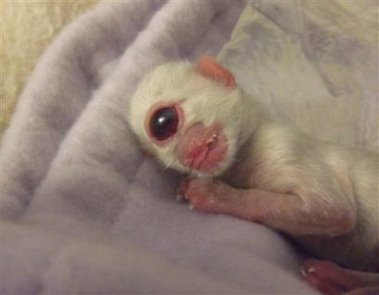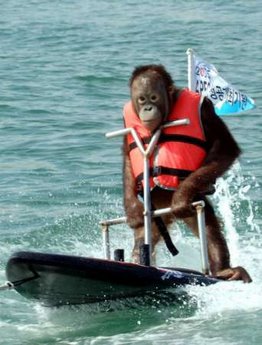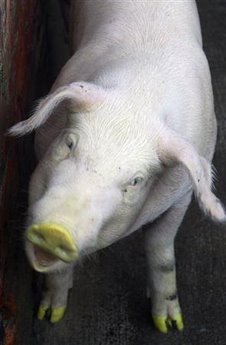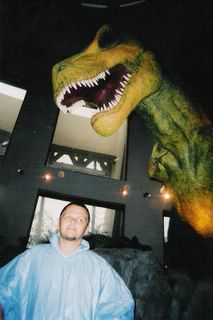Pterasaurapalooza!

Ancient Flying Reptiles Discovered
from LiveScience.com
Paleontologists have uncovered the remains of two new flying reptile species that shared the skies with early birds 120 million years ago in what is now China.

The two species, Feilongus youngi (above) and Nurhachius ignaciobritoi (below), belong to a family of flying reptiles known as pterosaurs. Both were discovered in Liaoning, a northeastern province of China famous for yielding fossils of bird-like dinosaurs.

Feilongus had two crests atop its head running from front to back, one along its foot-long snout and another on the back of its head. It had a slight overbite and its teeth were curved and needle-shaped, while that of Nurhachius were pointed and triangular. Both species had wingspans of about 8-feet and belonged to groups previously found only in Europe. The new pterosaur species are described in the October 6 issue of the journal Nature.
Pterosaurs were distant relatives of dinosaurs and ruled the skies for millions of years before birds. The members of their order ranged from that of sparrow-sized Pterodactyls to
 Quetzalcoatlus, the largest flying creature of all time with a wingspan of up to 40-feet.
Quetzalcoatlus, the largest flying creature of all time with a wingspan of up to 40-feet.Some pterosaurs flew by flapping their wings like modern birds. Others, like Feilongus and Nurhachius, used their thin wings of stretched skin to ride the wind like kites. Many pterosaurs were covered in hair similar to that of mammals.
Overall, 15 species of pterosaurs have been discovered in Liaoning, including three that have yet to be described. The discovery of many more bird-like species in the region suggests that early birds were more diverse and outnumbered the pterosaurs. The distribution of the fossils also suggests that the birds and pterosaurs inhabited different environments.
The hills of Liaoning are also famous for their bounty of feathered dinosaur fossils that many scientists believe are strong evidence that birds evolved from dinosaurs.








 what the Great Conjunction is. 'What's the Great Conjunction?'
what the Great Conjunction is. 'What's the Great Conjunction?' 




 A Is for Androids
A Is for Androids B Is for Boba
B Is for Boba C Is for Calvin
C Is for Calvin D Is for Dragons
D Is for Dragons E Is for Elric
E Is for Elric F Is for Futures
F Is for Futures G Is for Genie
G Is for Genie H Is for Hobbits
H Is for Hobbits I Is for Iceman
I Is for Iceman J Is for Jedi
J Is for Jedi K Is for Kraken
K Is for Kraken





































































0 Comments:
Post a Comment
<< Home